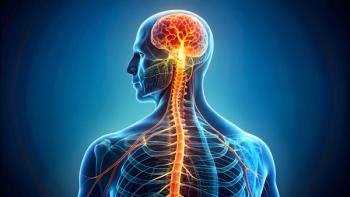
New Research Offers Key Safety, Early Efficacy Data on Zolgensma in SMA
A year after the FDA approved Zolgensma for the treatment of spinal muscular atrophy in children aged under 2 years without end-stage weakness, researchers shared safety and early efficacy data from the first 21 children treated with the gene therapy in Ohio.
In May of last year, the FDA granted approval to onasemnogene abeparvovec-xioi (Zolgensma), the first approved gene therapy for the treatment of
Now, researchers have published key safety and early efficacy
Zolgensma is administered as a 1-time injection alongside at least 2 months of corticosteroids. Across patients, there were no clinically significant adverse events following treatment, although just over half of patients required a prolonged prednisolone course, the majority of which were over 8 months and/or over 8 kg.
Twelve patients were 8 months or older, 8 (67%) of which had aspartate aminotransferase (AST) and/or alanine aminotransferase (ALT) levels that were at least 2 times the upper limit of normal. Six of these patients also had elevations in γ glutamyl transpeptidase (GGT) that were >1 times normal, although the researchers noted these patients remained clinically well and showed no abnormalities indicating symptomatic liver dysfunction.
“Our experience suggests that when a thorough screening process is completed, social isolation is implemented to minimize the risk of illness after gene transfer, and patients are monitored closely in the weeks to months after the gene transfer, adverse events are few,” researchers explained. They added, “We do recommend delaying gene transfer until complete resolution of preexisting viral illnesses. We also recommend a delay in live vaccinations until 4 weeks after the prednisolone course and taper have been completed.”
In patients under the age of 6 months, gene transfer with Zolgensma was well tolerated. Seven of the 9 children under the age of 6 months exhibited “no noteworthy” elevation in AST, ALT, or GGT after treatment, according to the researchers.
“In children <6 months of age, the key to successful post-gene transfer clinical course is dependent on prednisolone administration,” researchers wrote. “These young children are often still feeding by mouth and may resist taking this medication. Care must be taken to ensure that the prescribed dosage is received and given properly, with flexibility in delivery method (oral liquid, crushed tablets, dissolvable tablets) as required.”
Notably, nearly all (90%) patients had asymptomatic drops in platelet counts within the first week following treatment, which recovered without the need for intervention.
The majority (19) of patients completed at least 2 functional assessments, which indicated that all had stabilization or improvement in functional outcomes:
- 2 (11%) patients had stabilization in motor function
- 17 (89%) patients had objective improvements of at least 1 point in functional outcomes scores within 4 months, 12 of which had at least a 3-point improvement by 4 months
Reference: Waldrop MA, Karingada C, Storey MA, et al. Gene therapy for spinal muscular atrophy: safety and early outcomes. Pediatrics. 2020;146(3):e20200729. doi:10.1542/peds.2020-0729
Newsletter
Stay ahead of policy, cost, and value—subscribe to AJMC for expert insights at the intersection of clinical care and health economics.








